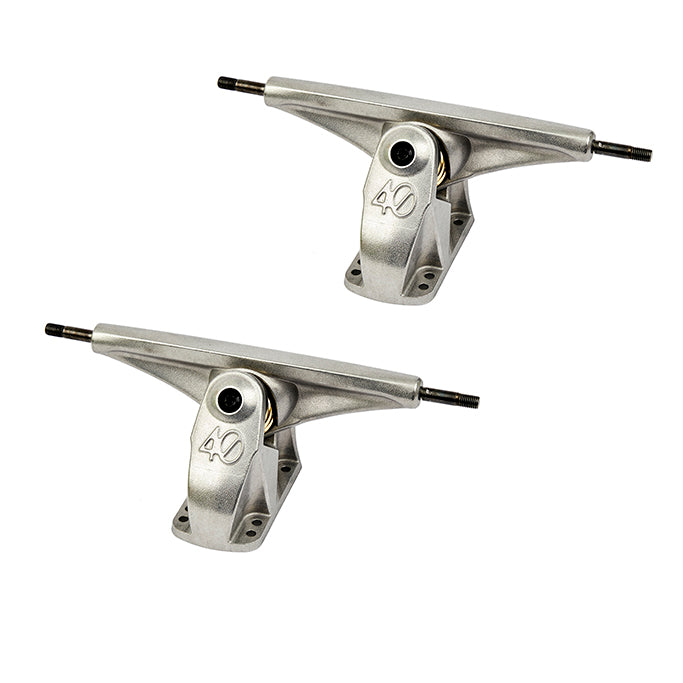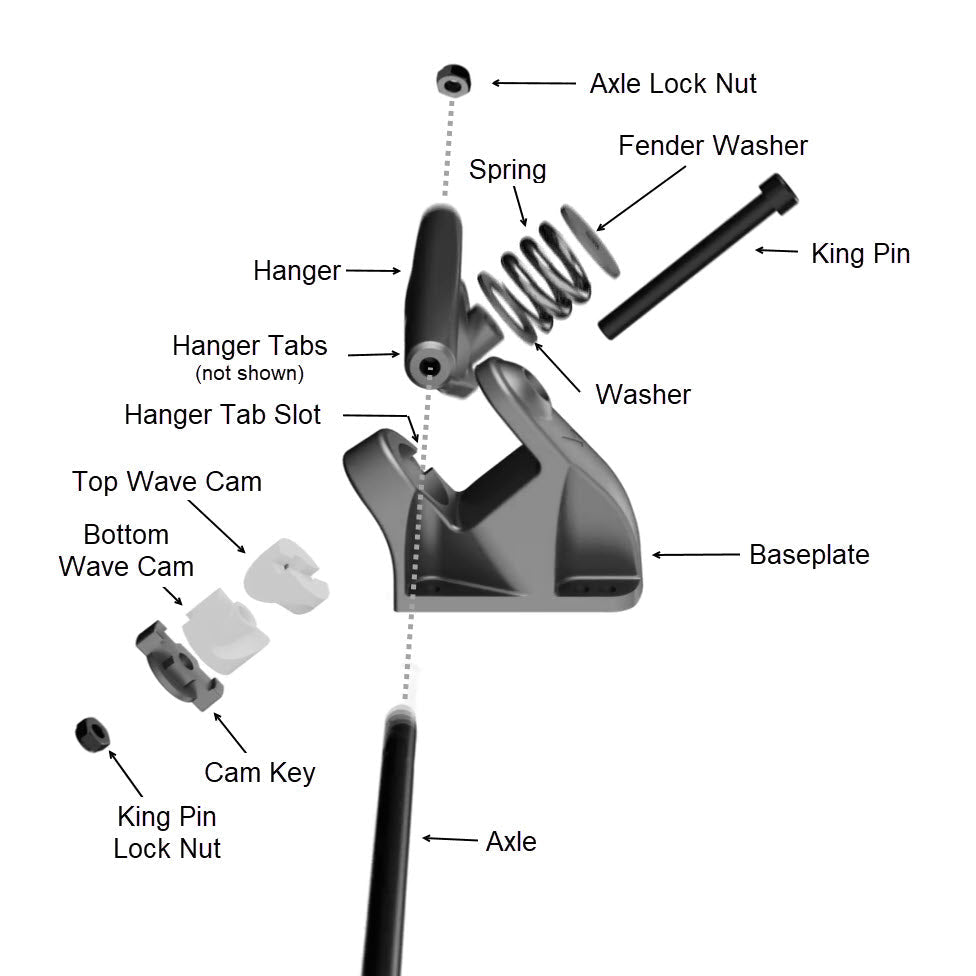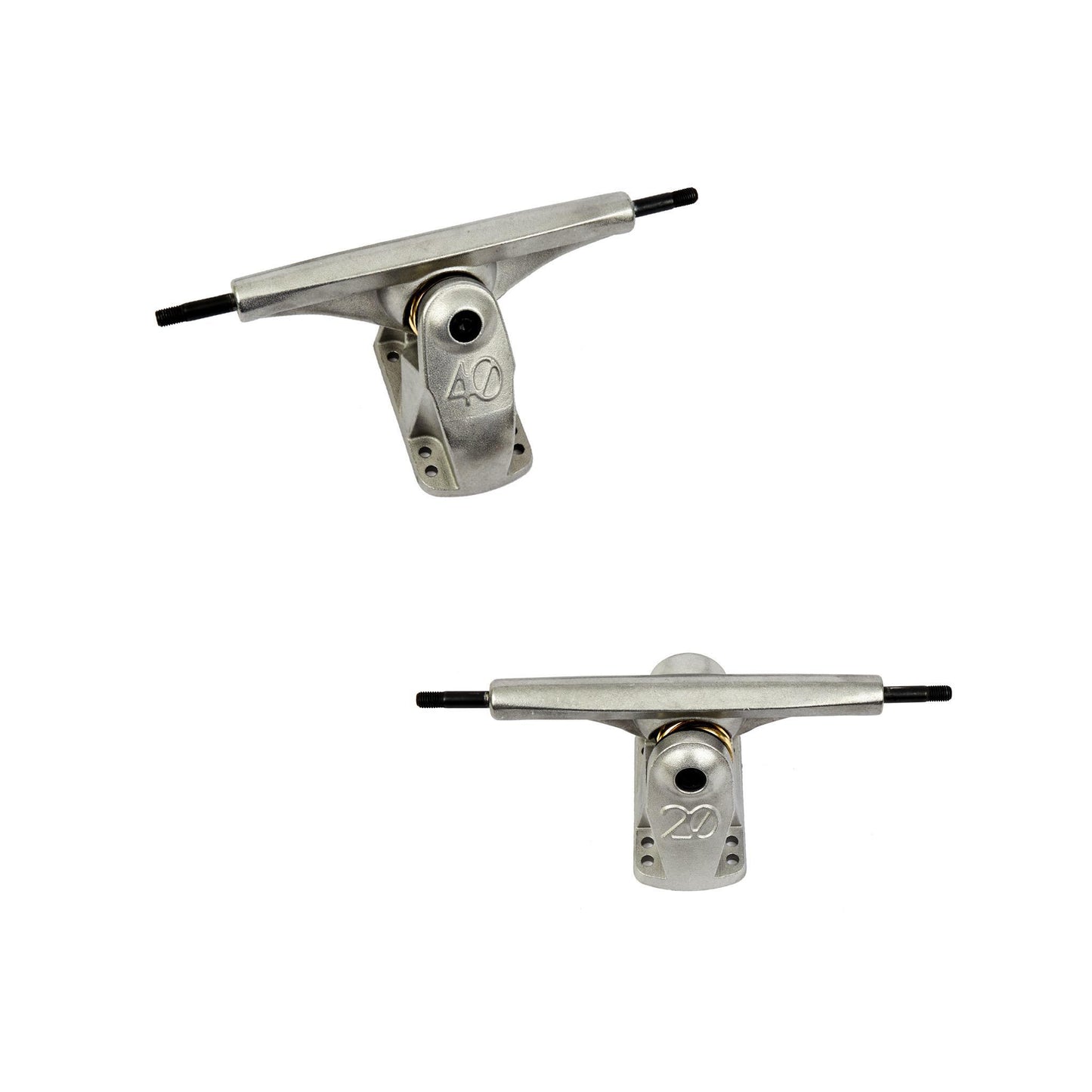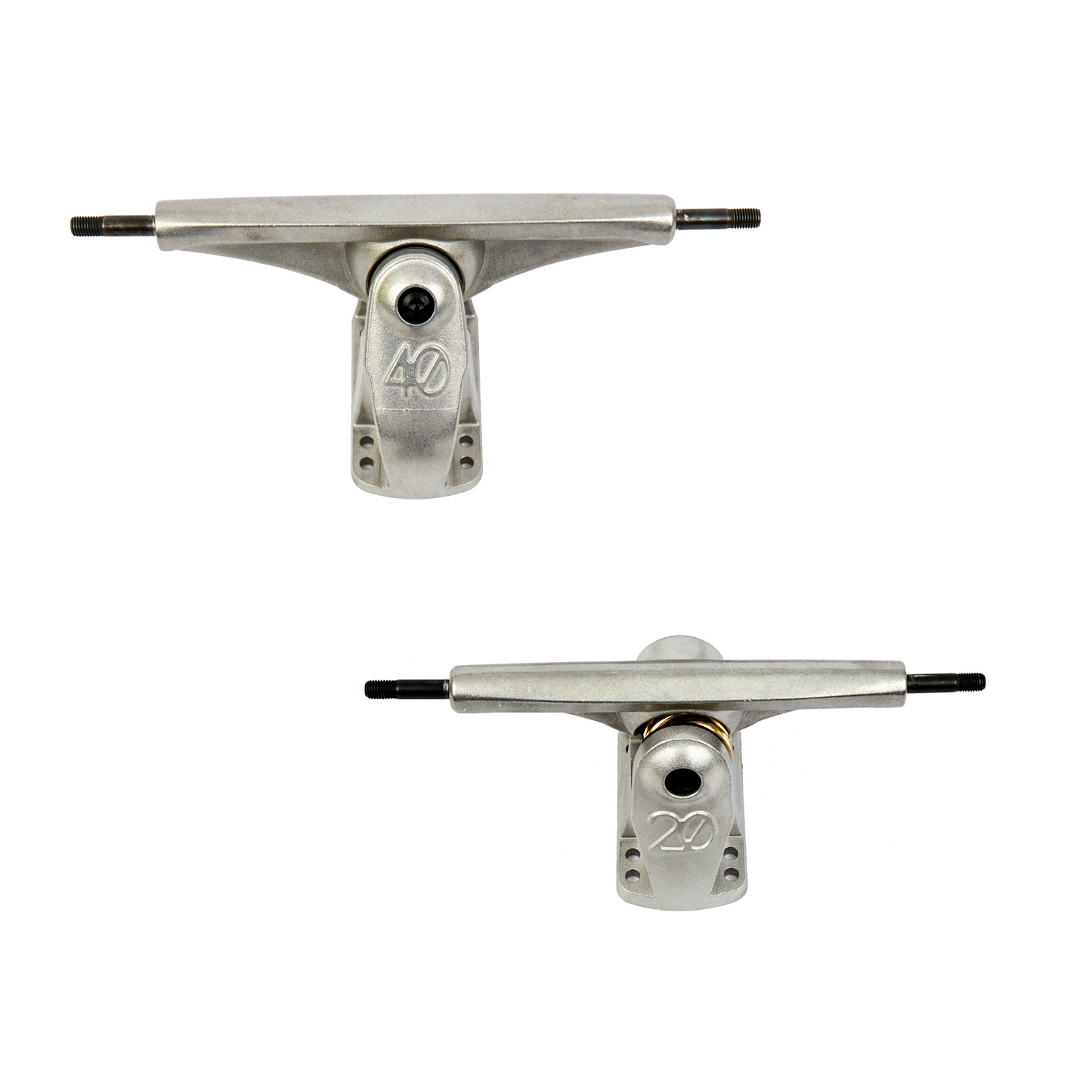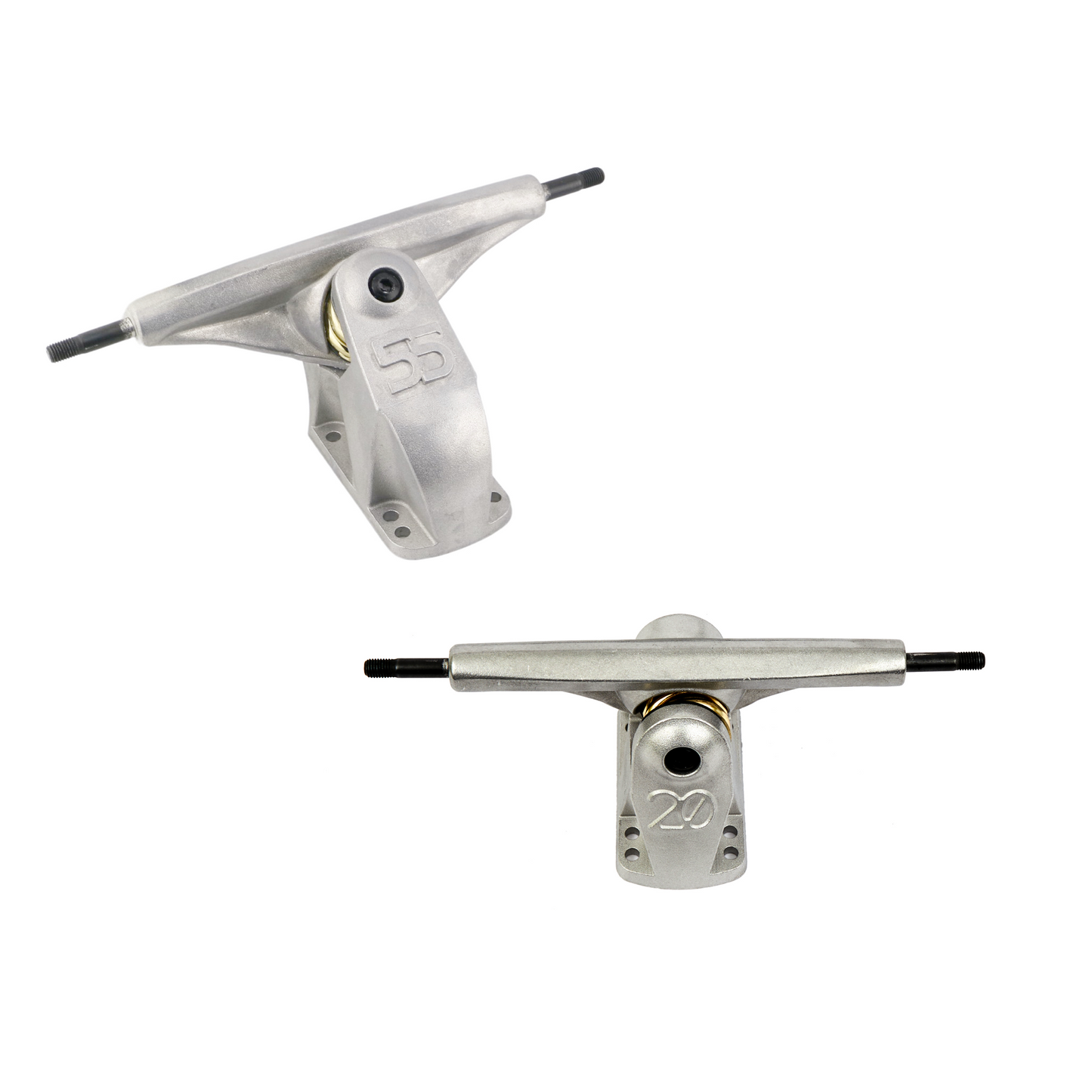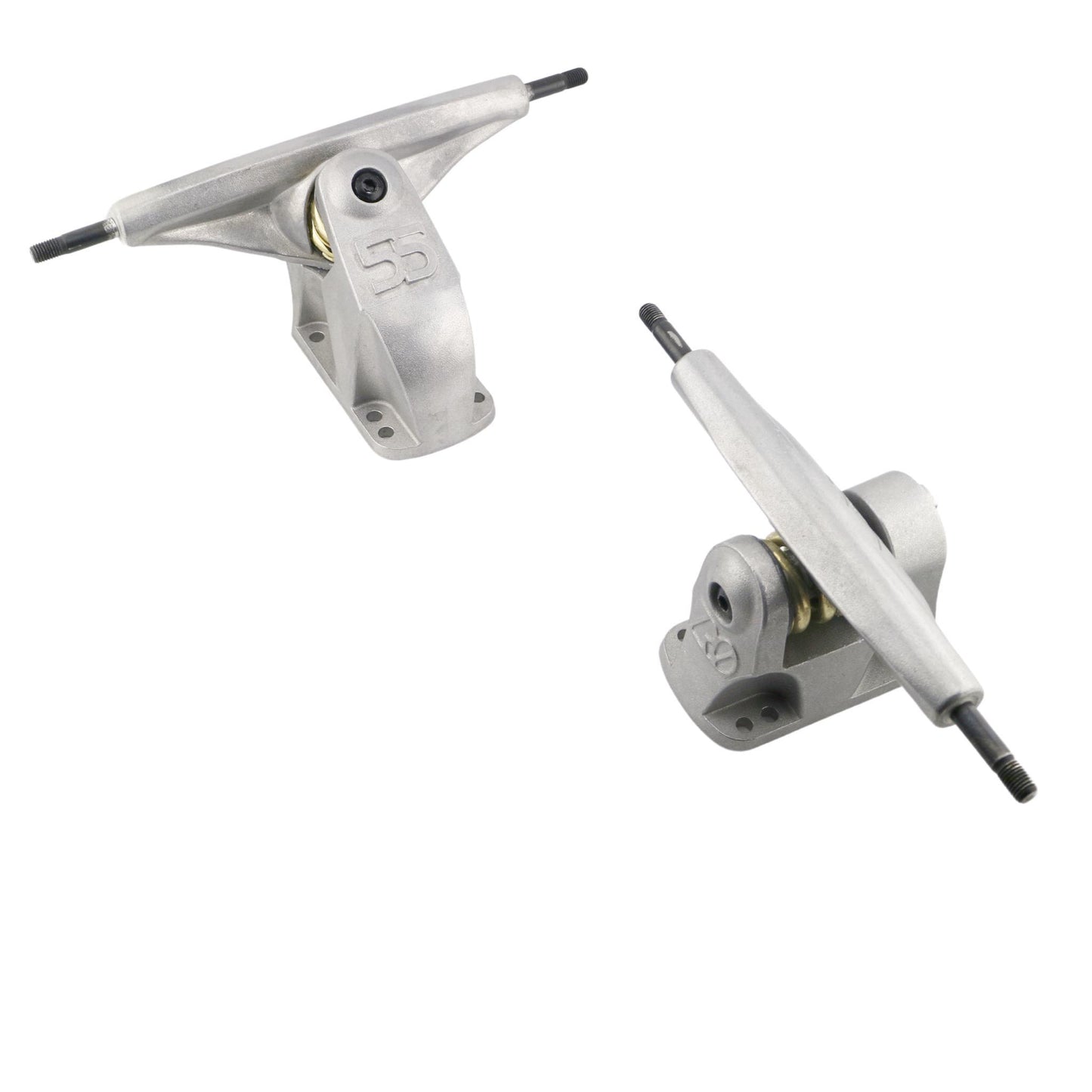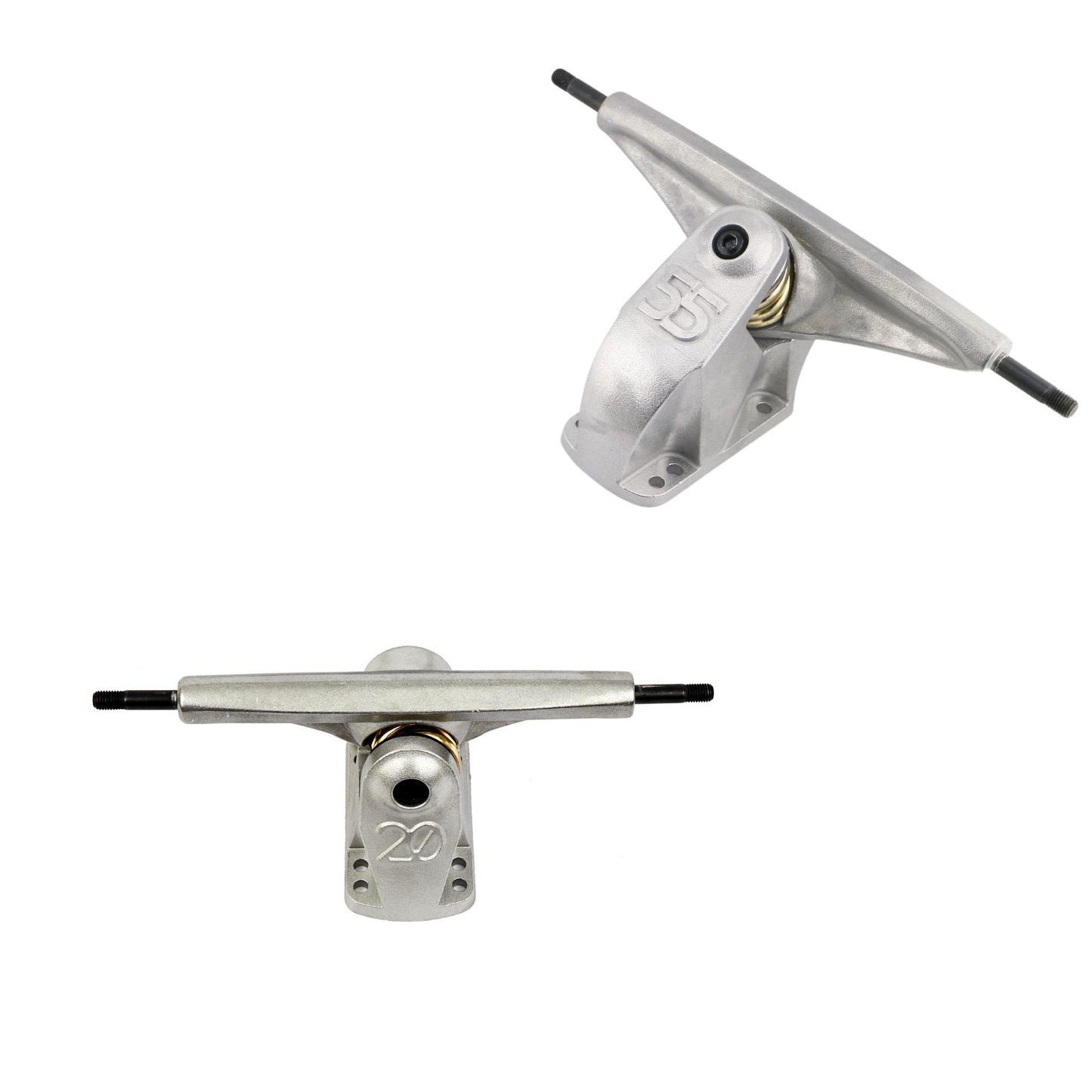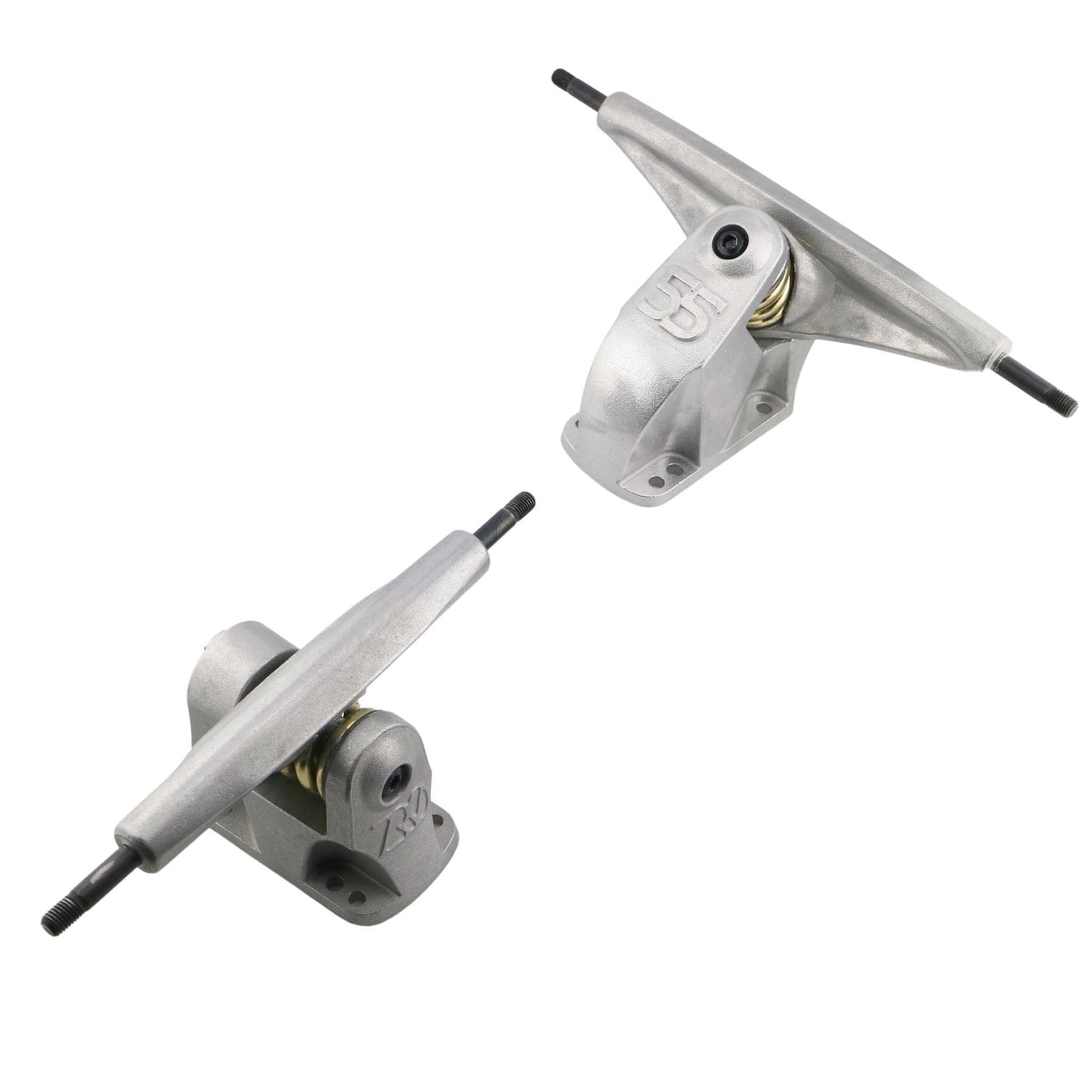

HST 2.0 Truck Sets
HST 2.0 Truck Sets
Couldn't load pickup availability
HST® Longboard Skateboard Trucks can be configured for three riding styles, Carving, Surfskating and Pumping.
Recommended set-ups
Carving: 40/200 front and 40/200 rear
Surfskate: 55/180 front and 20/180 rear
Pumping: 55/180 front and ZR0/160 rear
Hamboards Classic (more rear foot): 40/200 front and 20/180 rear
Four pivot axis options:
- ZR0 - 0° Pivot ( 0° turn w/ 42° lean)
- 20 - 20° Pivot (19° turn w/ 42° lean)
- 40 - 40° Pivot (37° turn w/ 42° lean)
- 50 - 55° Pivot (51° turn w/ 42° lean)
Three hanger (axel) width options:
- 200mm
- 180mm
- 160mm
Fully assembled sets comprise:
HST 2.0 Baseplates
HST 2.0 Hangers
Gold Springs
Composite Wave Cams
Cone Bushings
Double Moly Washers
85mm kingpins, black manganese coated
Carving Boards are Longboards with equal turning in the front and rear, with the center of turning located at the middle of the wheelbase. Carving is the original case of Longboarding, in which a rider makes sequential S-turns in while the front and rear axel travel a virtually identical path; somewhat similar to snowboarding.

Surfskates are Longboards that turn more in the front than the rear and the center of turning is located near or directly under the rear foot. Surfskating is a special case of Longboarding, in which a rider makes sequential S-turns while the front axel travels a wider path than the rear axel allowing the rider to create deep carves and a forward force vector; somewhat similar to surfing. Surfskating is a combination of Carving and Pumping.

Pumping Boards are Longboards with more turning in the front than the rear while the center of turning is located near or at the rear axel maximizing the forward force vector. Pumping is a special case of Longboarding, in in which a rider makes rapid sequential S-turns while the front axel travels a wide path and the rear axel travels a very narrow path allowing the rider to maximize forward force vector; common in Long Distance Pumping.

For more information please review this blog.
Share
